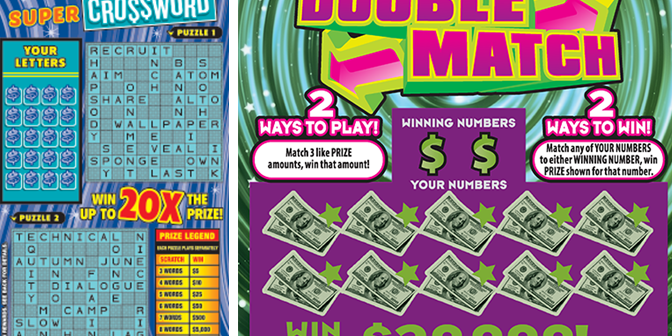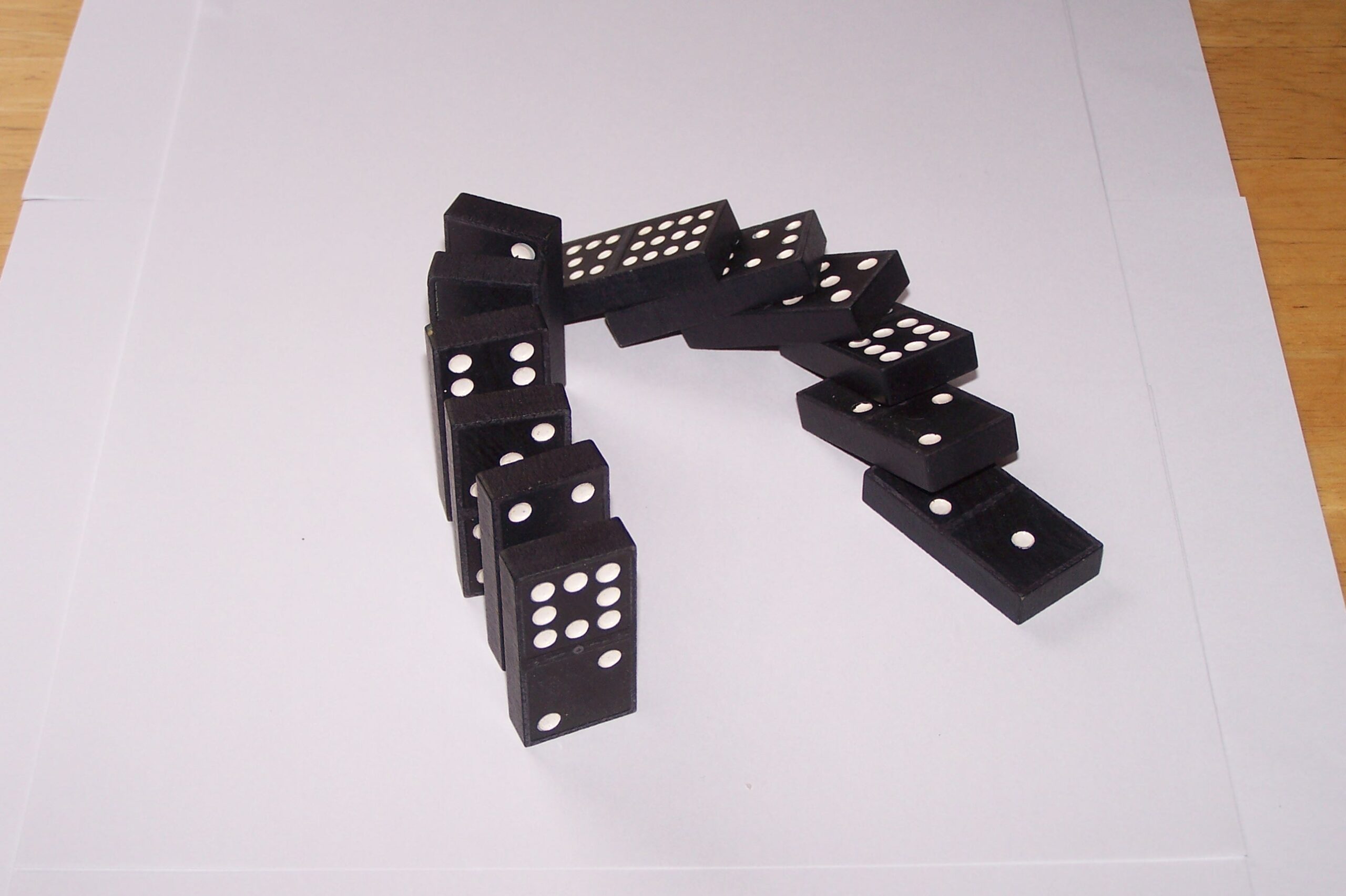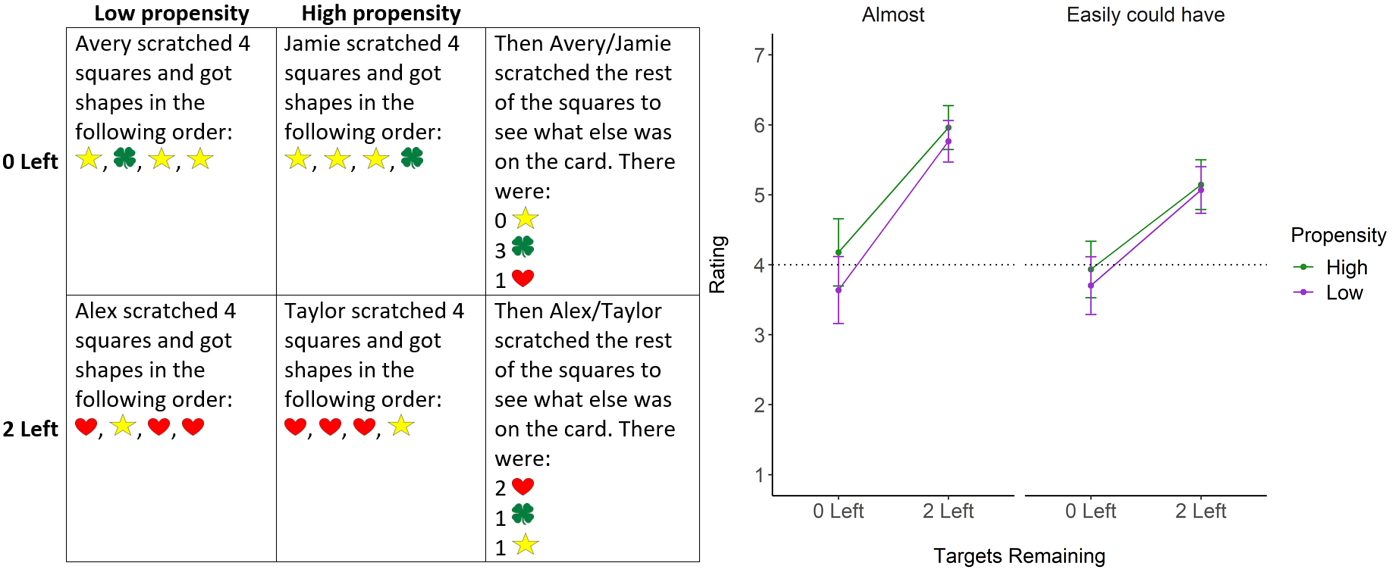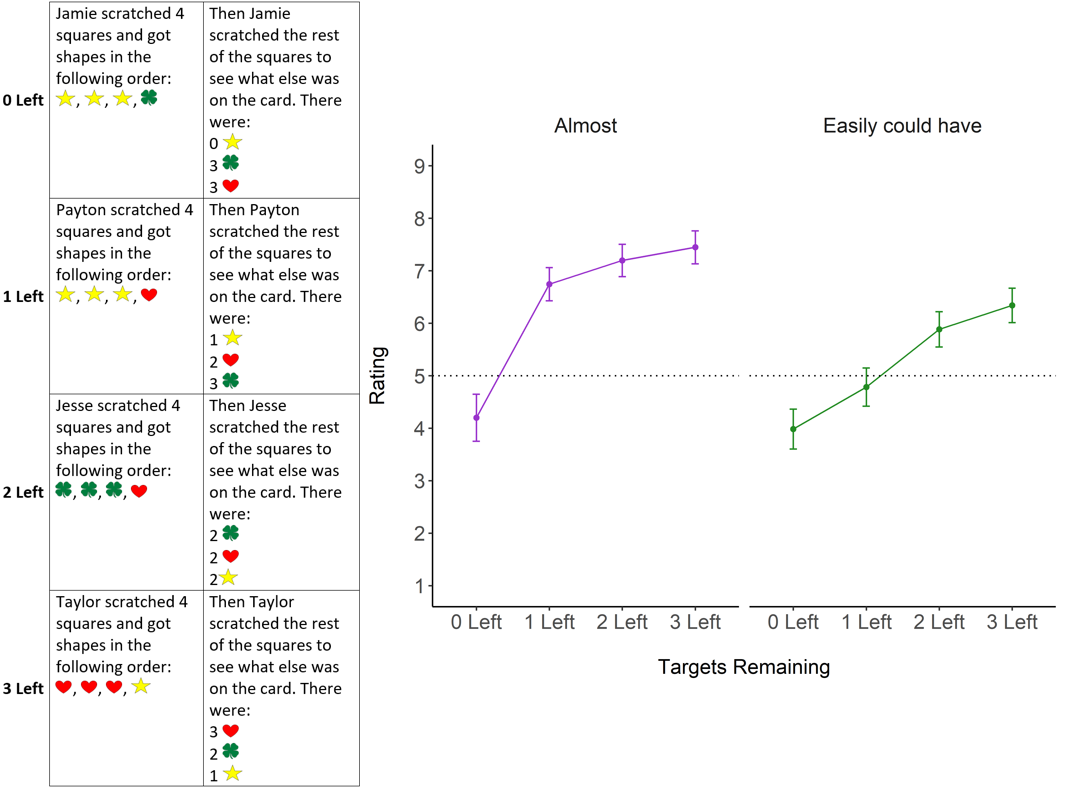My grandmother loved to play the odds, and she shared this love with her grandchildren. Every holiday season, she would distribute a slate of scratchers to her grandkids to try their luck. With a borrowed penny in hand, I’d scratch slowly, letting the suspense build after every revealed shape or letter until the eventual loss. Winning any prize, even the smallest, was cause for celebration and made you the winner of all the cousins’ envy (even though my grandma always claimed to love us all equally). I fondly remember years of scratching crosswords or matching shapes, cheering wildly for a winning of any size in the face of my familial competition. When luck eluded me in those less fortunate years, I looked through the discarded scratchers, hoping for a missed symbol that would change a losing ticket into a winning card. The easy ones (the crossword ones with a bank of letters indicating which words could be scratched off) would be especially frustrating, with tantalizingly close solutions just out of reach. The more difficult scratchers (random rows of shapes that must match for varying prizes) would only tempt me when I revealed four identical shapes in a row, only to be thwarted by a mismatched fifth shape. Looking back, I probably spent way too much time thinking about that one elusive final shape or word that I needed to win a big prize.

This ability for us to imagine and describe different hypotheticals is such an interesting linguistic phenomenon that these kinds of statements even have their own name: counterfactuals. Counterfactuals are statements that describe things that did not happen or are simply not true (i.e., they are counter to the facts of real life!). You can use counterfactuals to describe that career path you almost took, envisioning alien worlds, or rewriting the endings of your favorite movies (Emma Stone and Ryan Gosling end up together in La La Land if you stop the movie five minutes early!). Counterfactuals offer a window into our imaginations. Reflecting on my near wins with those Christmas scratchers, I find myself using counterfactuals to say “I almost won that time!” or “I could have easily won if I only had one more letter.” While these are both hypothetical statements, are they the same kind of hypothetical? Are both situations the same kind of close to winning?
Luckily for me, researchers Tiffany Doan, Stephanie Denison, and Ori Friedman (pictured below) investigated how these two types of “closeness” are distinguished in their recent article published in the Psychonomic Society’s journal Psychonomic Bulletin & Review. In a series of four experiments using my favorite Christmas tradition, they focused on how people decide whether something “almost happened” or “easily could have happened” when reviewing the results of scratch cards. By exploring these distinctions, Doan and colleagues can offer insights into our perception of success and failure, and how we understand probability and chance.

Previous research has often described counterfactual closeness with propensity: whether there was a trend towards a particular outcome. To illustrate this concept, imagine a series of dominoes all falling sequentially in a line until one is knocked out of order by a mischievous cat. According to the propensity account, “possibility” is a requirement for all close counterfactuals. Using the dominos scenario, you may say, “All the dominoes would have toppled if that darn cat didn’t bat one away!” This assertion implies the event was close to happening because the necessary conditions were in place, that is, setting up half the dominoes in the first place. However, the propensity account also holds that “closeness” doesn’t depend on probability; it would be equally close if the dominoes always knocked the next one over, or if sometimes they randomly fell to the side instead of forward.

Doan, Denison, and Friedman looked deeper into this difference between propensity, probability, and possibility, and how they affect two types of close counterfactuals:
- statements that something “almost happened”
- statements that something “easily could have happened.”
They predicted that possibility would have a much greater effect on judgments that something “almost happened” (from here on Almost judgments), while probability would have a greater effect on judgments that something “easily could have happened” (from here on Easily judgments).
In their experiment, participants looked at the results of a scratch card whereby revealing four matching shapes results in a prize (a classic formula). Unfortunately for the imaginary buyer of these scratchers, they’re all losers – three matching shapes are always accompanied by a single mismatching shape. To vary propensity, the order of the shapes varied so that all the matching shapes appeared in order followed by the mismatch (High propensity), or the second of the four shapes was the mismatch (Low propensity). Across the first three experiments in their article, Doan, Denison, and Friedman found a marginal, but significant, increase in both Almost judgments and Easily judgments for the High propensity condition versus the Low propensity condition.

However, this paper’s more novel approach was manipulating possibility and probability. To do this, Doan and colleagues revealed the unscratched shapes to show various amounts of matching shapes in the bank. For example, some cards had zero matching shapes left over, meaning it was impossible to win from the start! Other cards had one to three matching shapes left over, varying the probability of victory.

The researchers found that Almost judgments are really sensitive to that increase from zero to one shape remaining. (I’m reminded of Jim Carrey’s quote from Dumb and Dumber, “So you’re telling me there’s a chance?”), but don’t get much higher with each extra matching shape in the bank. Almost judgments were very sensitive to possibility. To quote the authors,
“How close an outcome feels to almost happening depends on it being possible to begin with.”
Easily judgments, however, seemed to be equally sensitive to each successive matching shape leftover, and they increased relatively evenly over the four conditions. Easily judgments relied on probability.
The authors sum it up best:
“People think things like, ‘I almost caught the bus’, or ‘I easily could have won that game’. But these thoughts depend on those outcomes being possible to begin with. You wouldn’t have been close to catching the bus if it never showed up or close to winning the game if you didn’t play.”
So even if you don’t want to know the exact odds (like Han Solo), I think we could all learn from my grandma, and play the odds anyway.
Featured Psychonomic Society Article
Doan, T., Denison, S., & Friedman, O. (2023). Close counterfactuals and almost doing the impossible. Psychonomic Bulletin & Review, 1-9. https://doi.org/10.3758/s13423-023-02335-w
